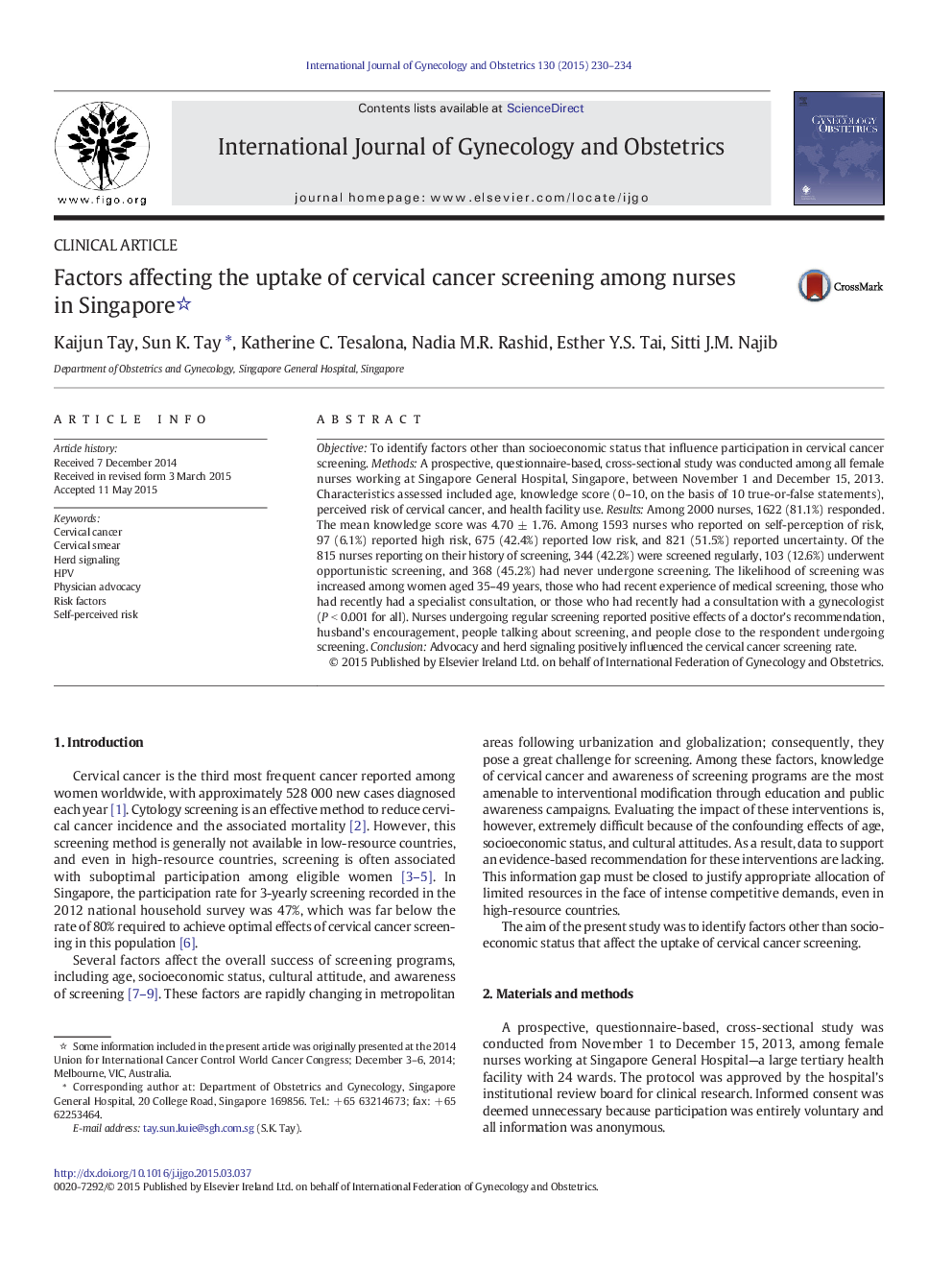| Article ID | Journal | Published Year | Pages | File Type |
|---|---|---|---|---|
| 3952569 | International Journal of Gynecology & Obstetrics | 2015 | 5 Pages |
ObjectiveTo identify factors other than socioeconomic status that influence participation in cervical cancer screening.MethodsA prospective, questionnaire-based, cross-sectional study was conducted among all female nurses working at Singapore General Hospital, Singapore, between November 1 and December 15, 2013. Characteristics assessed included age, knowledge score (0–10, on the basis of 10 true-or-false statements), perceived risk of cervical cancer, and health facility use.ResultsAmong 2000 nurses, 1622 (81.1%) responded. The mean knowledge score was 4.70 ± 1.76. Among 1593 nurses who reported on self-perception of risk, 97 (6.1%) reported high risk, 675 (42.4%) reported low risk, and 821 (51.5%) reported uncertainty. Of the 815 nurses reporting on their history of screening, 344 (42.2%) were screened regularly, 103 (12.6%) underwent opportunistic screening, and 368 (45.2%) had never undergone screening. The likelihood of screening was increased among women aged 35–49 years, those who had recent experience of medical screening, those who had recently had a specialist consultation, or those who had recently had a consultation with a gynecologist (P < 0.001 for all). Nurses undergoing regular screening reported positive effects of a doctor’s recommendation, husband’s encouragement, people talking about screening, and people close to the respondent undergoing screening.ConclusionAdvocacy and herd signaling positively influenced the cervical cancer screening rate.
